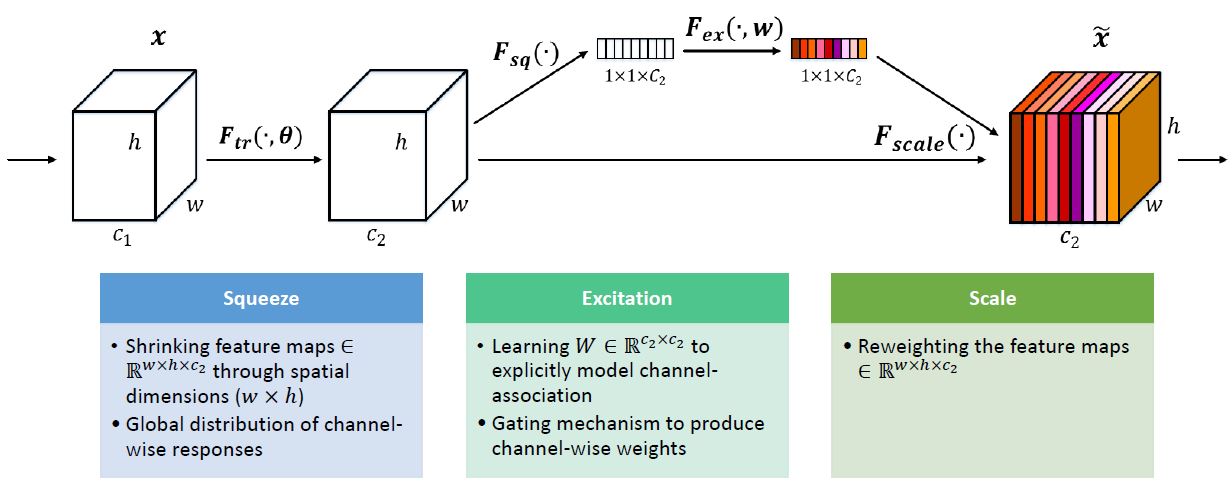Squeeze and Excitation Networks in Keras
Implementation of Squeeze and Excitation Networks in Keras 2.0.3+.

Models
Current models supported :
- SE-ResNet. Custom ResNets can be built using the
SEResNetmodel builder, whereas prebuilt Resnet models such asSEResNet50,SEResNet101andSEResNet154can also be built directly. - SE-InceptionV3
- SE-Inception-ResNet-v2
- SE-ResNeXt
Additional models (not from the paper, not verified if they improve performance)
- SE-MobileNets
- SE-DenseNet - Custom SE-DenseNets can be built using
SEDenseNetmodel builder, whereas prebuilt SEDenseNet models such asSEDenseNetImageNet121,SEDenseNetImageNet169,SEDenseNetImageNet161,SEDenseNetImageNet201andSEDenseNetImageNet264can be build DenseNet in ImageNet configuration. To use SEDenseNet in CIFAR mode, use theSEDenseNetmodel builder.
Squeeze and Excitation block
The block is simple to implement in Keras. It composes of a GlobalAveragePooling2D, 2 Dense blocks and an elementwise multiplication.
Shape inference can be done automatically in Keras. It can be imported from se.py.
from tensorflow.keras.layers import GlobalAveragePooling2D, Reshape, Dense, Permute, multiply
import tensorflow.keras.backend as K
def squeeze_excite_block(tensor, ratio=16):
init = tensor
channel_axis = 1 if K.image_data_format() == "channels_first" else -1
filters = init._keras_shape[channel_axis]
se_shape = (1, 1, filters)
se = GlobalAveragePooling2D()(init)
se = Reshape(se_shape)(se)
se = Dense(filters // ratio, activation='relu', kernel_initializer='he_normal', use_bias=False)(se)
se = Dense(filters, activation='sigmoid', kernel_initializer='he_normal', use_bias=False)(se)
if K.image_data_format() == 'channels_first':
se = Permute((3, 1, 2))(se)
x = multiply([init, se])
return xAddition of Squeeze and Excitation blocks to Inception and ResNet blocks

